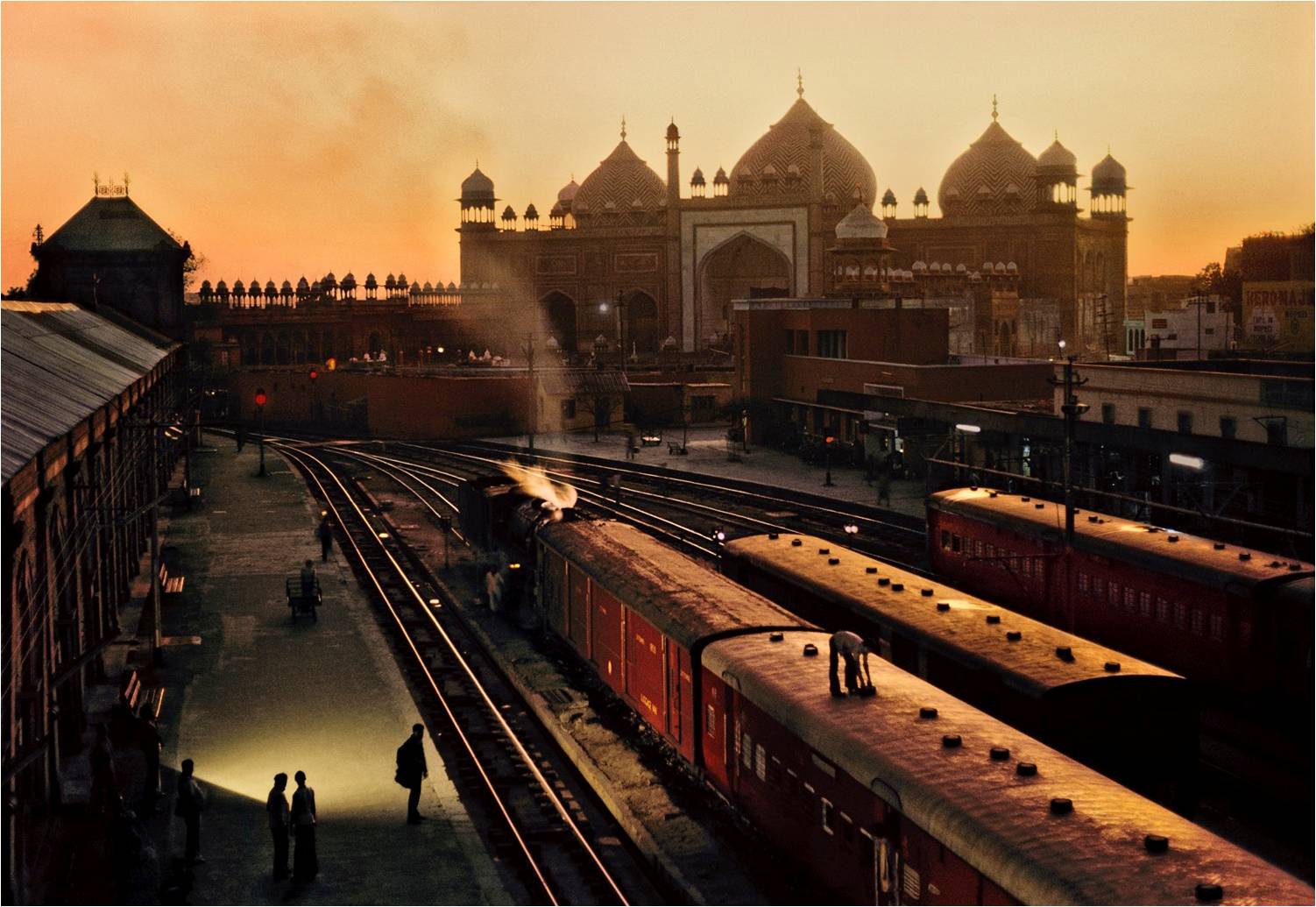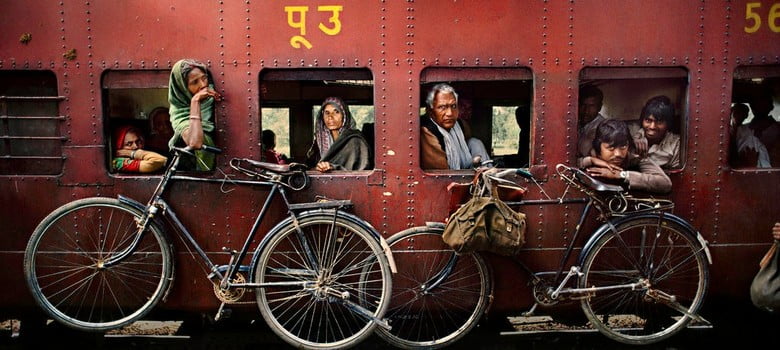
“There’s a lot of people here.”
This was Steve McCurry’s first thought when he arrived in India for the first time in 1978 with just a few clothes and a bag of film. Over the next three decades, the celebrated American photographer returned more than 80 times to the country that would steadily “delight, charm and horrify” him.
McCurry is best known for his portrait of a green-eyed Afghan refugee girl with a fierce gaze that made it to the cover of the National Geographic magazine in 1985. The photo changed his life, he says.
This time, the award-winning photographer is back with Steve McCurry: India, an exquisitely-produced book of photographs of the multitudes who so overwhelmed him during his first visit. The photographs span decades. One, taken in 1994, captures Mumbai’s milling masses with the moon rising over the city. In another, crowds walk on pontoon bridges built across the Ganges during the 2001 Kumbh Mela.

McCurry has travelled across India – from Kashmir to Kerala – capturing the extremes in culture, class and landscape that make up this vast country.
“Perhaps the most stark among the extremes McCurry illustrates are those between India’s rich and poor,” writes author and historian William Dalrymple in the book’s introduction, referring to McCurry’s ability to throw light on India’s “extraordinary contradictions”.
The contradictions are evident. On one page is a 1993 photograph of a homeless boy trying to sell roses at a traffic signal in Mumbai, while in another taken in 1996, Harshvardhan Singh, the “yuvraj” of the erstwhile state of Dungarpur, sits regally amid a collection of snarling heads topping tiger skins rolled neatly into rugs, and several deer and other animal heads mounted on the wall.



Each photograph captures people as they go about their daily lives – a boy with a sand boa coiled around his neck, a gnarled old man with Holi colours settled on the wrinkles on his face and a figure draped in a pink tarpaulin for protection from the Mumbai rain.


The photographer says he consciously gave ‘regular’ people pride of place in his book. “During my time in India I met Amitabh Bachchan, the Dalai Lama and Indira Gandhi, but they are not in the book,” he said. “I have never really gravitated towards celebrities. The book is about ordinary people – those living in villages or working in the city. It’s about a million stories or situations of certain kindnesses, of people opening up their homes and lives.”
He added: “The book is more like a poem – expressions and moments with the people I thought were some of the most interesting encounters I had had here.”

It is difficult to visit India without getting a sense of the importance religion plays in people’s lives, and McCurry hasn’t missed this. A scene from 1996 shows a Sikh devotee praying with the Golden Temple glowing in the background, while another captures devotees carrying a statue of Ganesha into the sea at Mumbai’s Chowpatty beach. Yet another is a portrait of a blue-skinned child dressed as Shiva seeking alms.

McCurry has covered war and conflict during his career. In such areas, he says, many people simply want their stories to be told. “That is what I’m basically doing in most cases,” he said. “Letting them know that their story matters.”
He equates photography to writing: “Things that interest or fascinate you – could be a person or a place you want to explore or write about – inspire you. Pictures, like words, are just another way to describe the world we live in.”

But he admits that photographers always suffer from a bit of self-doubt about whether they have managed to get everything they needed from a shoot. “Photographers deal with something like a blank canvas,” he said. “Sometimes you think you’ve taken a great picture but nobody responds to it. You’re never quite sure you have everything, but at some point you have to stop shooting because otherwise you never will.”
And what does he think of that bane of the smartphone generation, selfies? “I wish I had taken more selfies,” said McCurry who, over the decades, made the transition from analog to digital cameras.
He appreciates how technology has allowed almost everyone to take photographs. But he is careful to differentiate it from art. “Technology is now small and easy,” he said. “It’s just an inevitable progression like the typewriter to the laptop. All the selfies in the world are great but it doesn’t count as great art. It is the same as sending a text to a friend. A text is not great literature. Your text to a friend about getting lunch won’t bring a reader to tears. Similarly, a selfie won’t move a viewer.”

[“source-scroll”]




